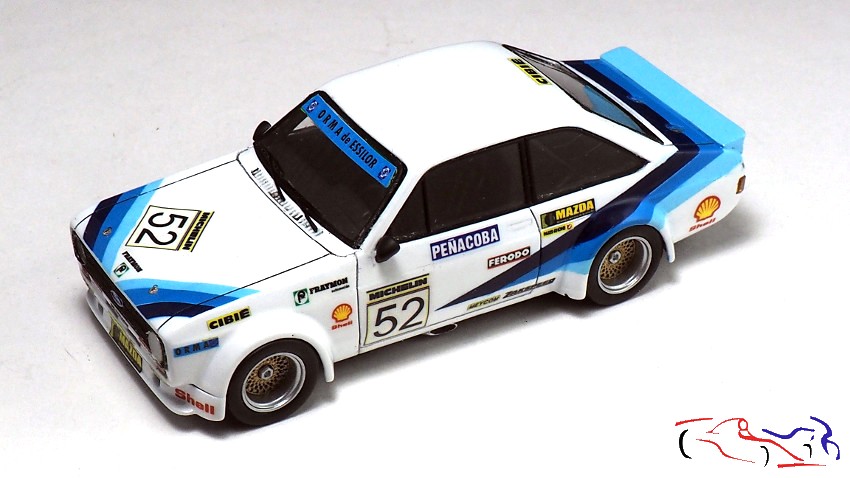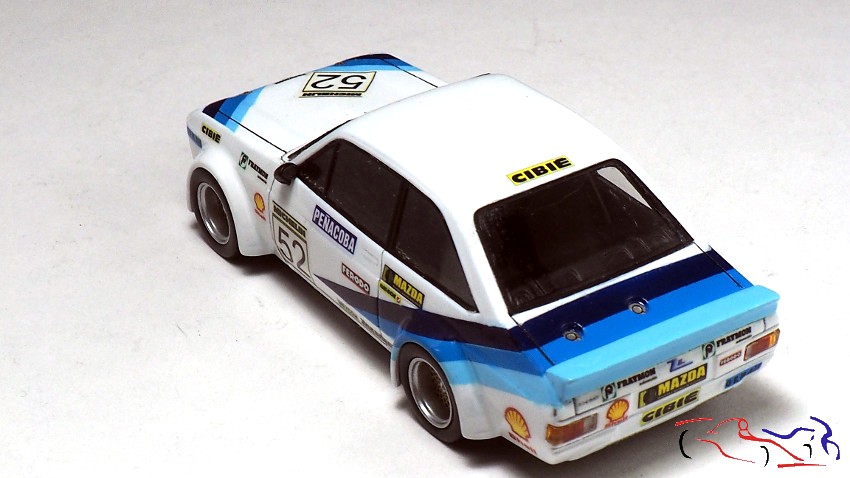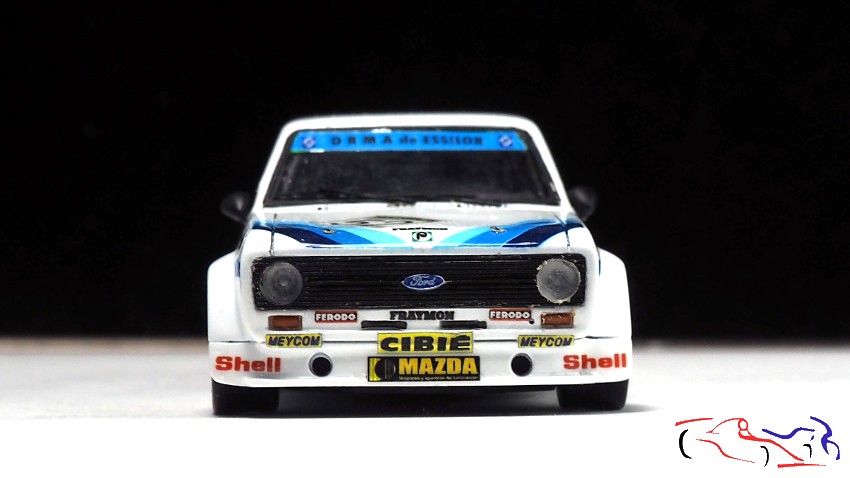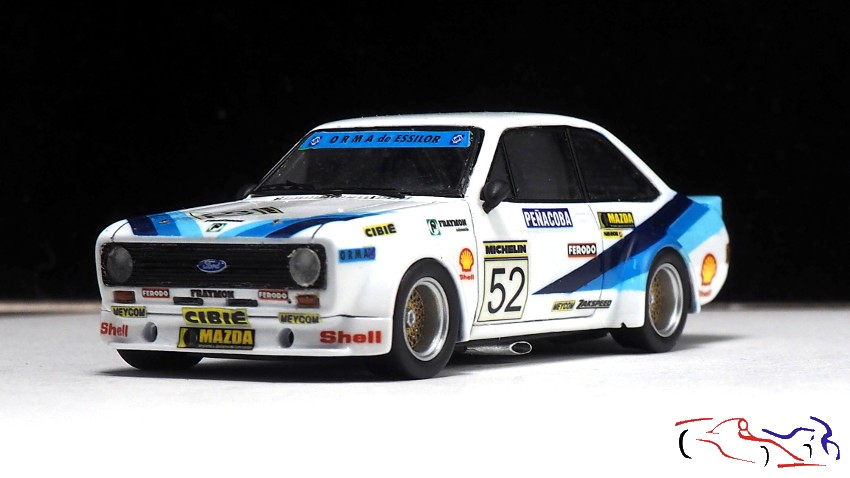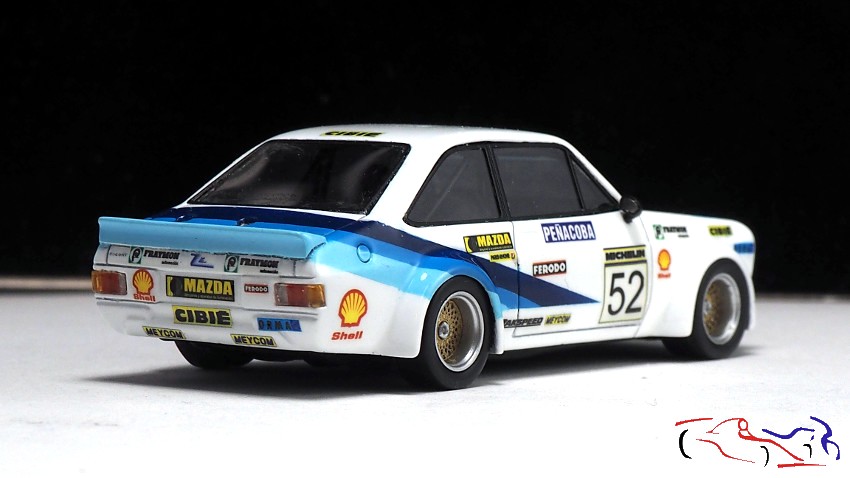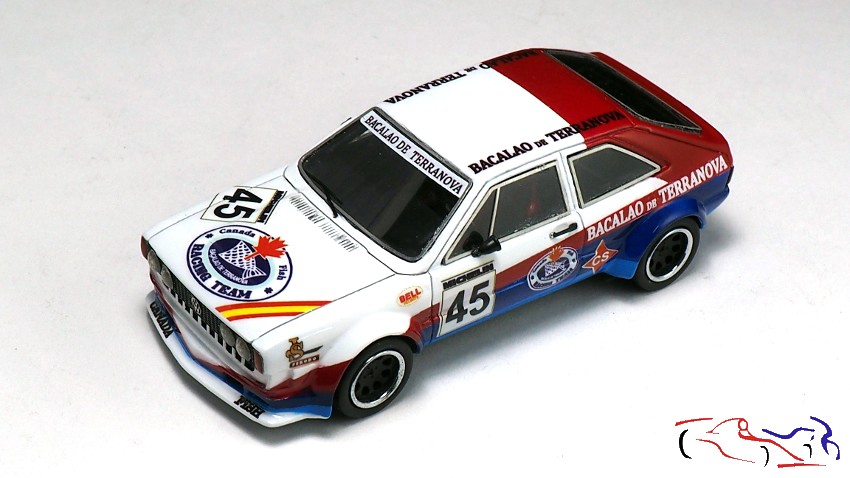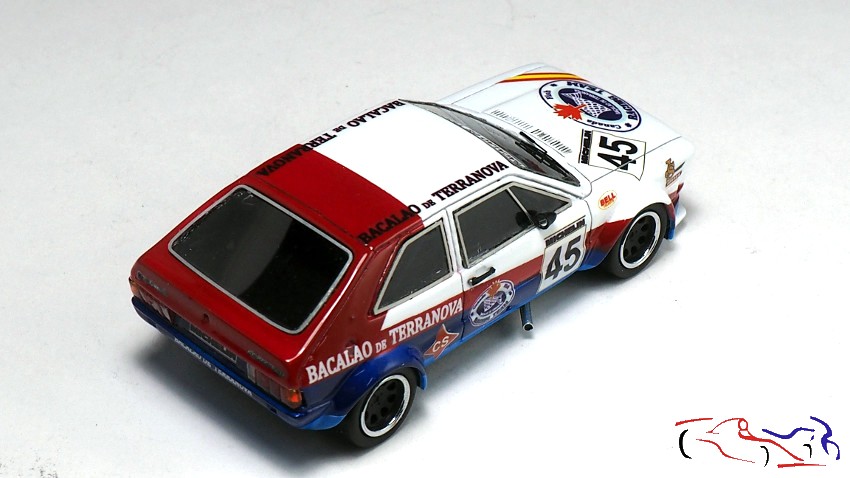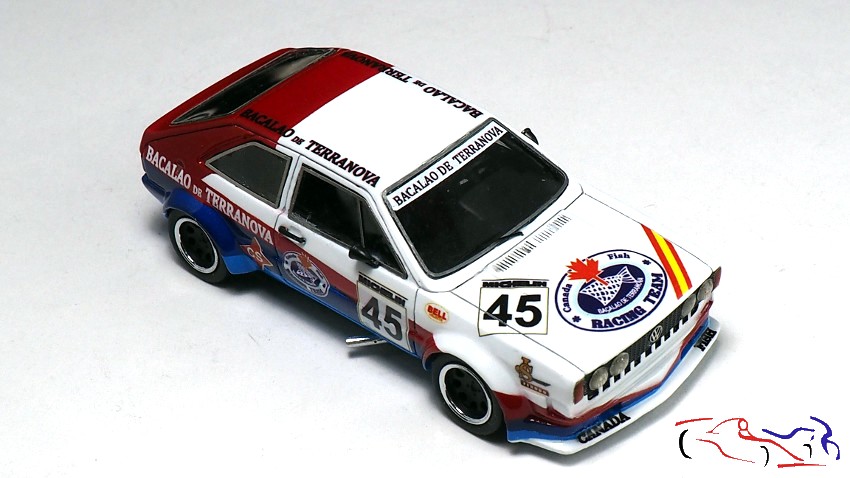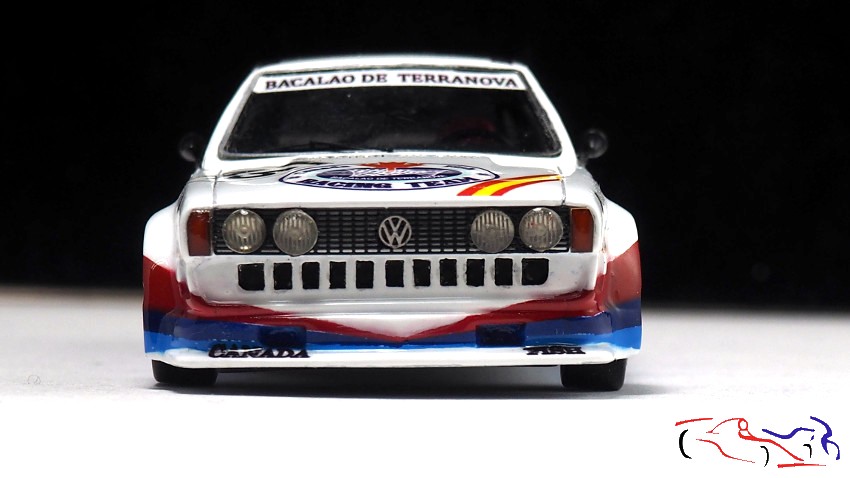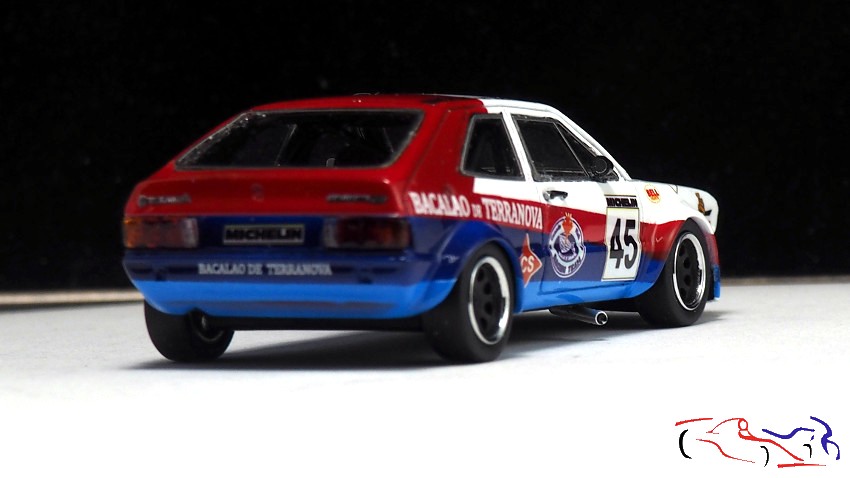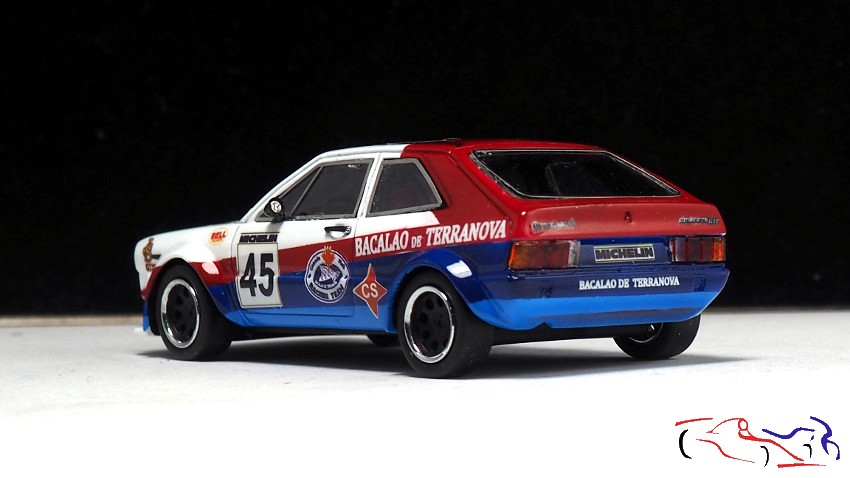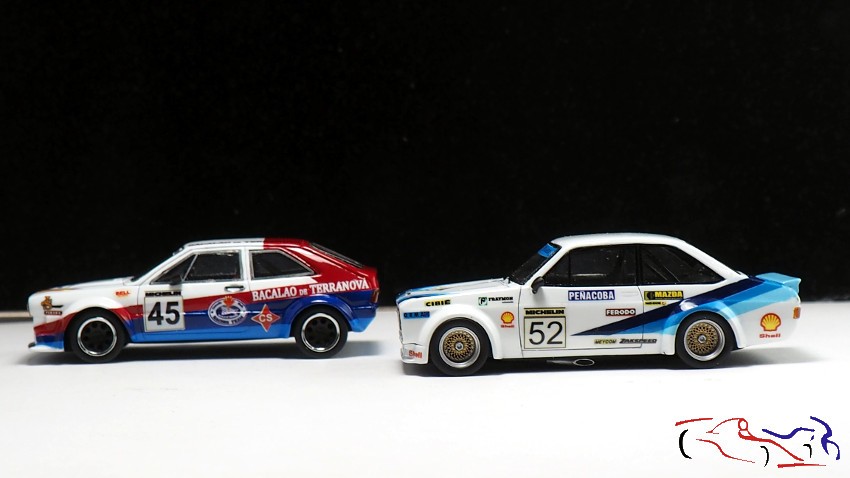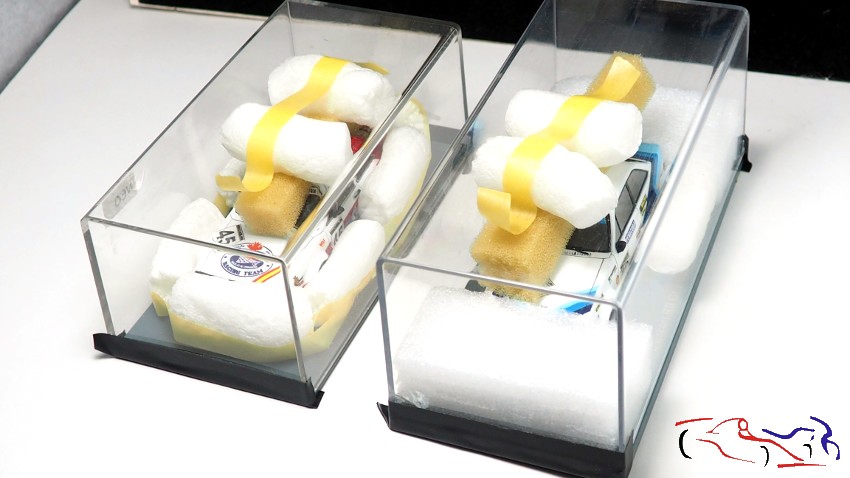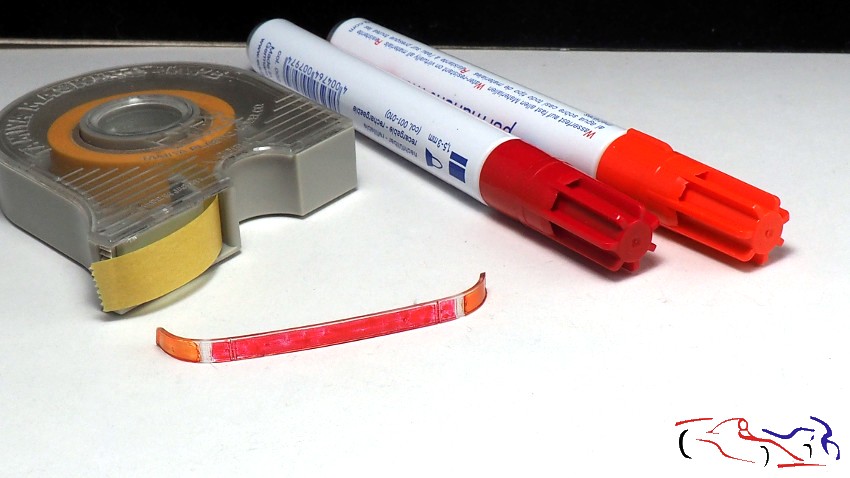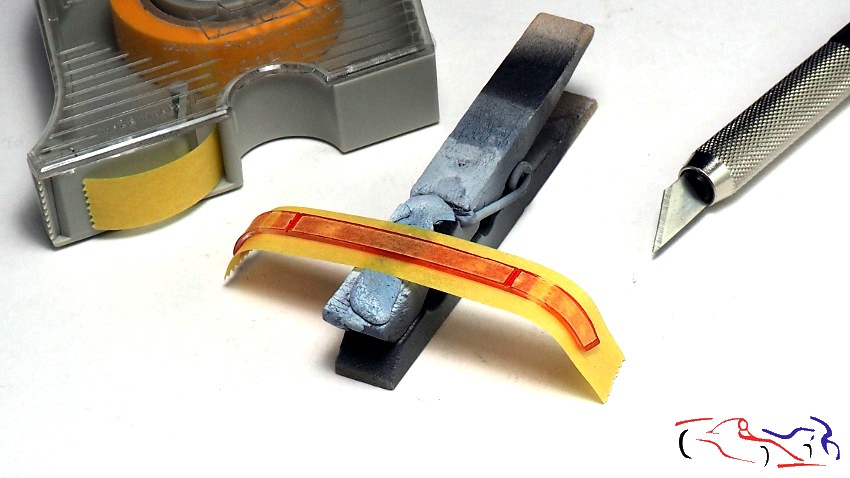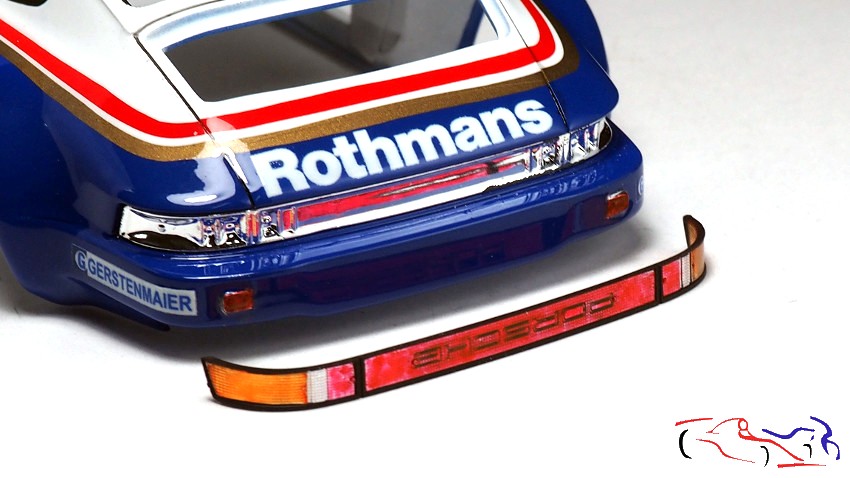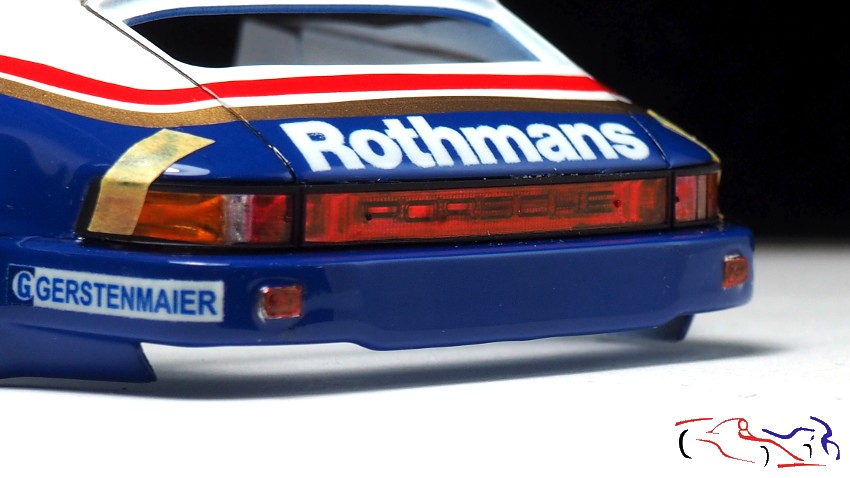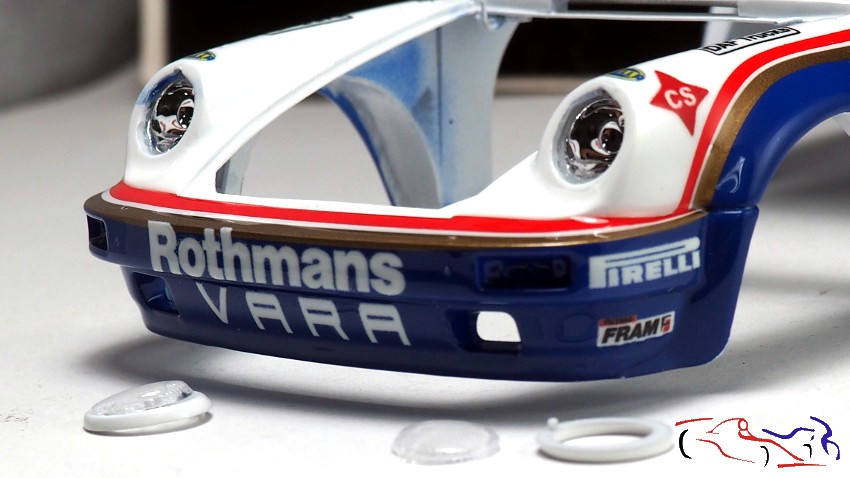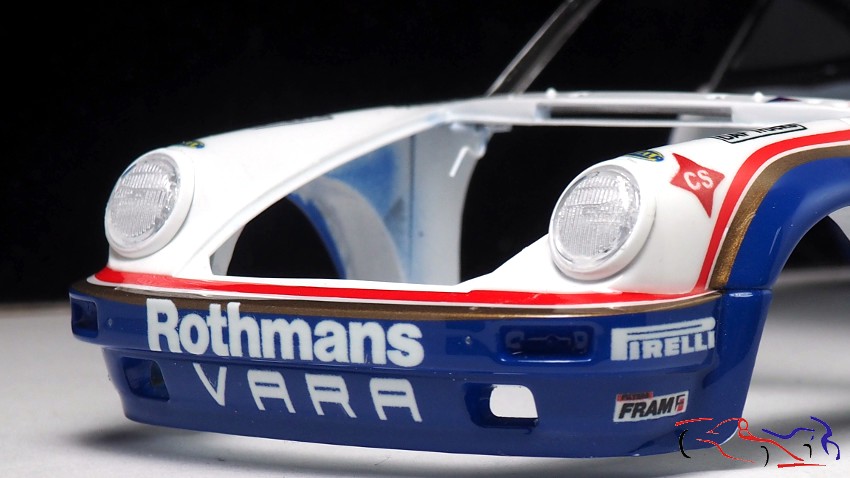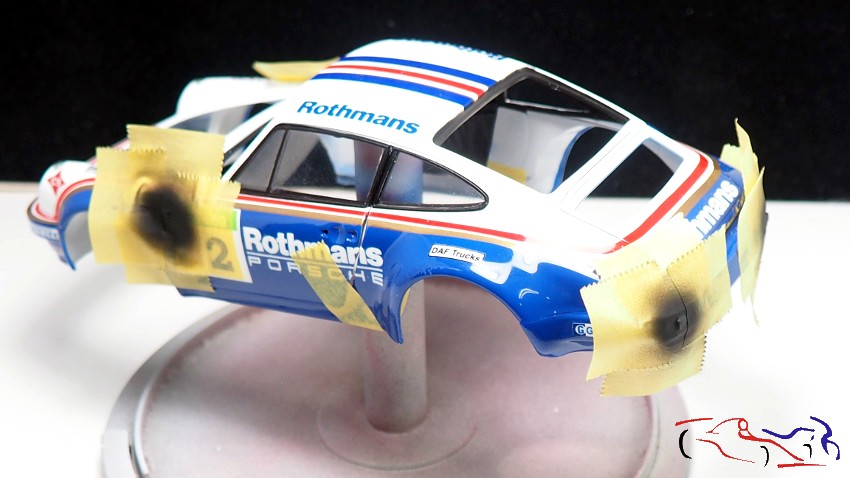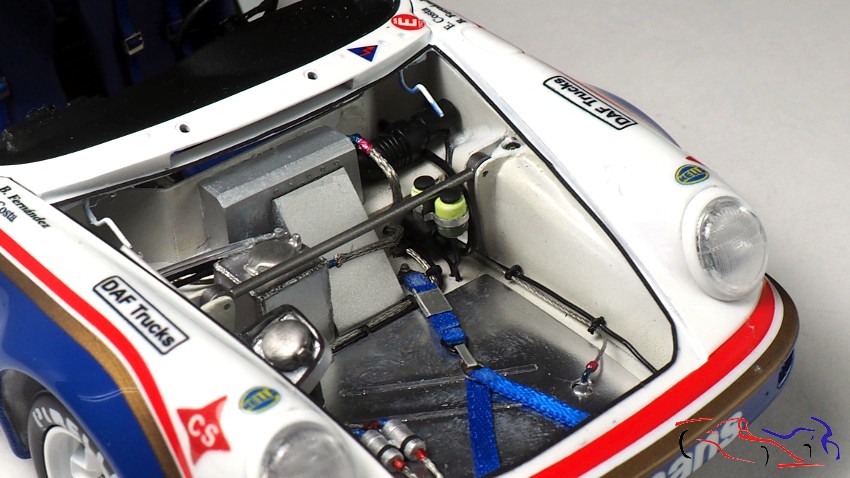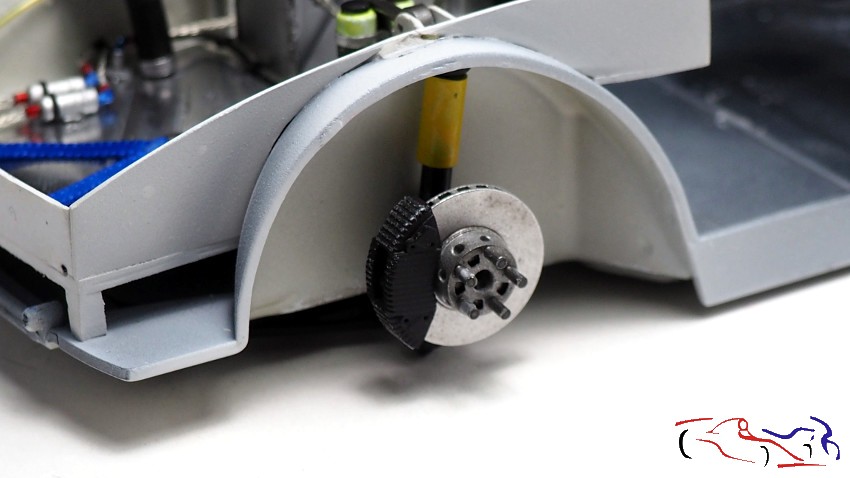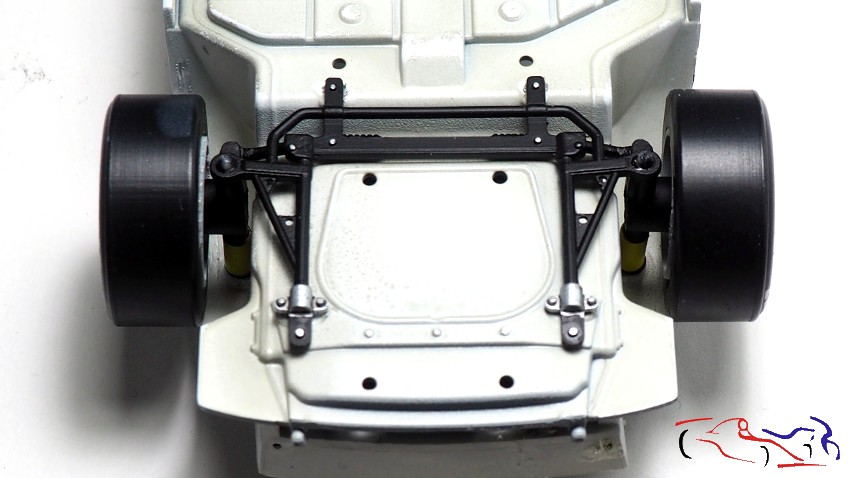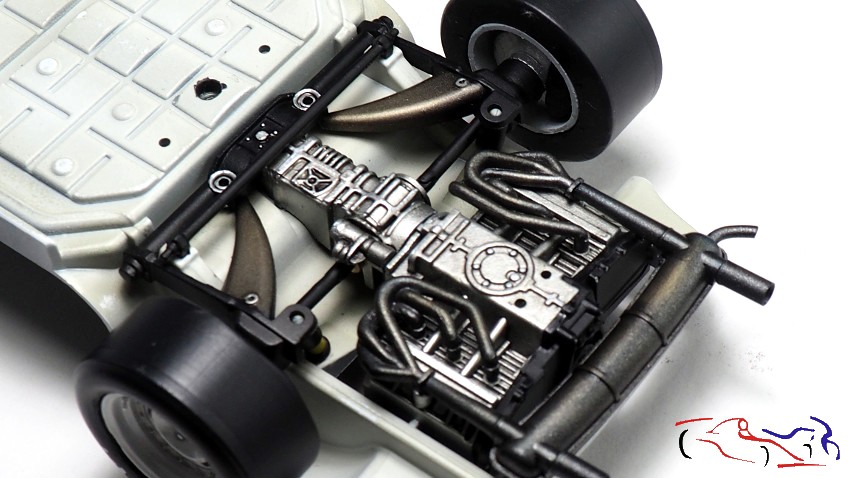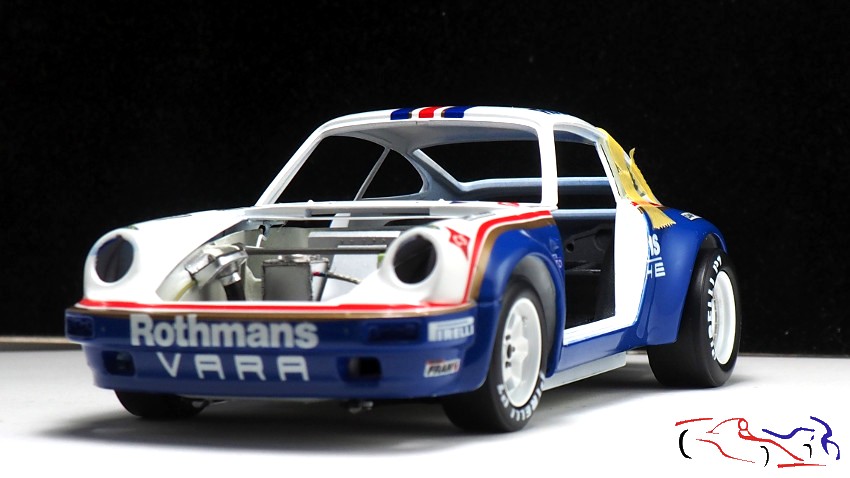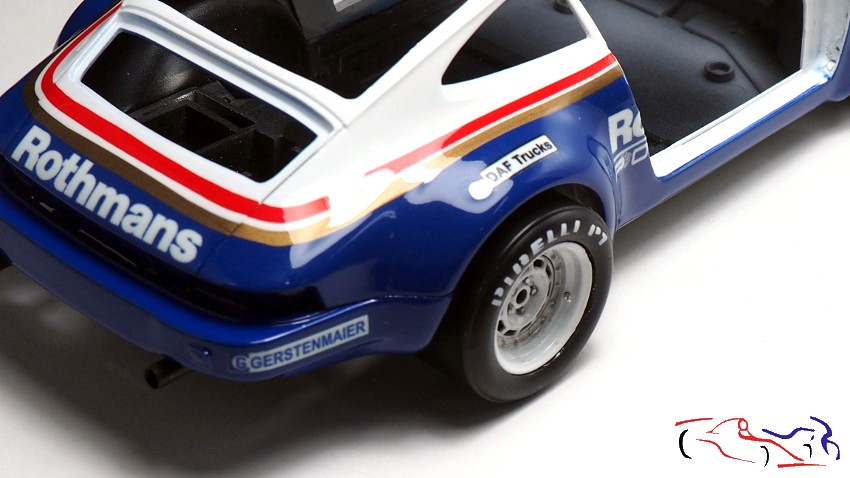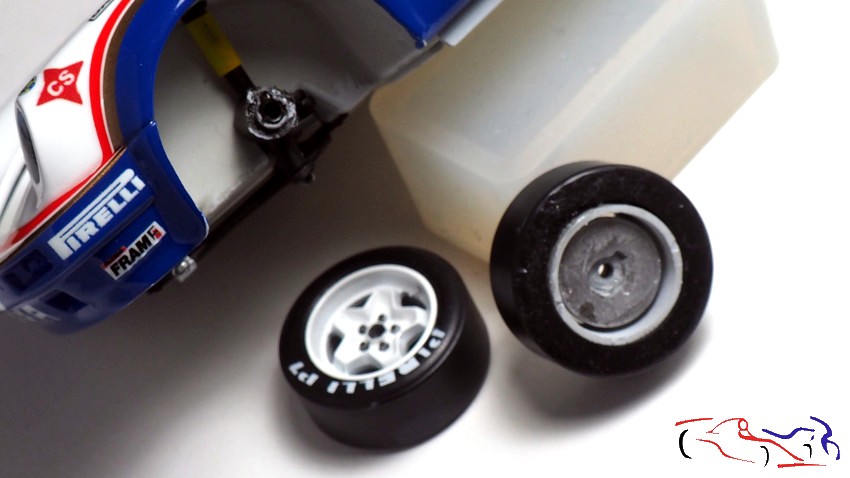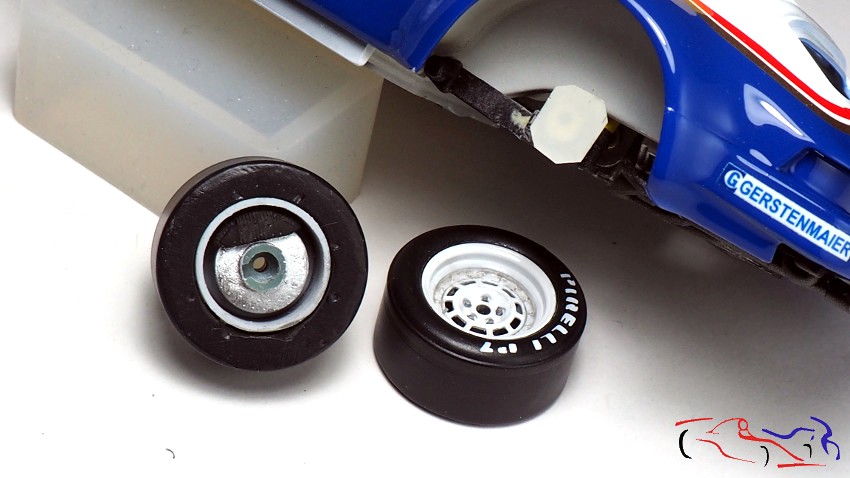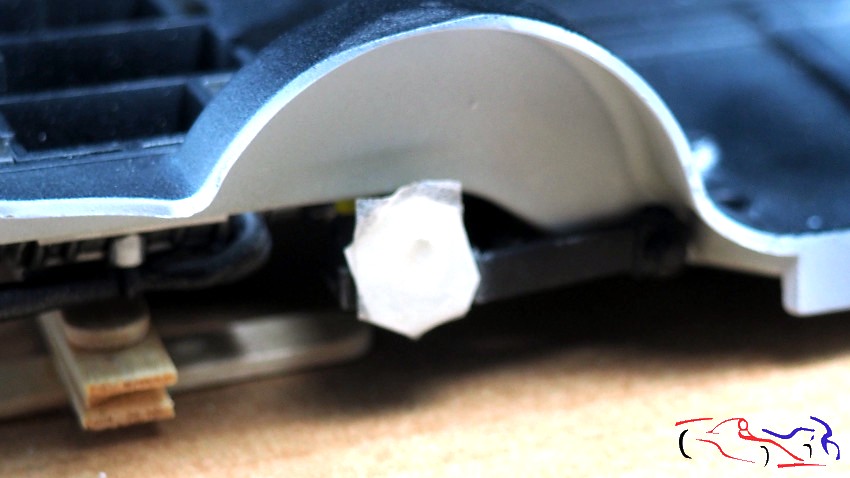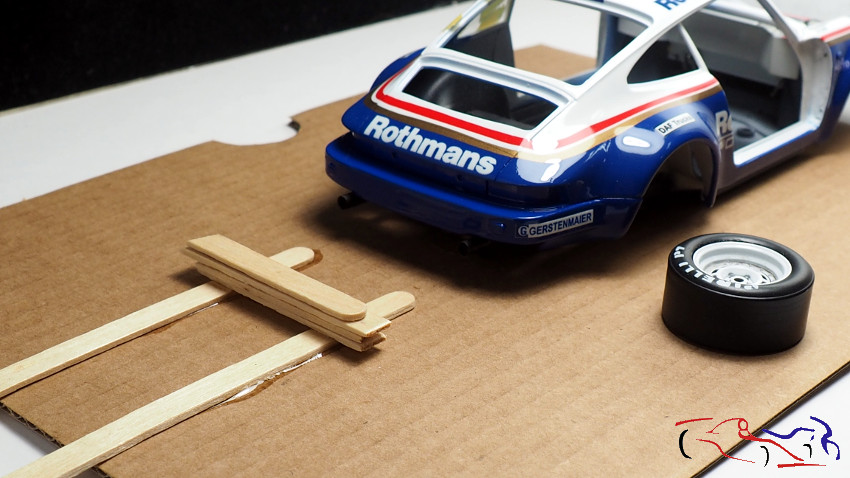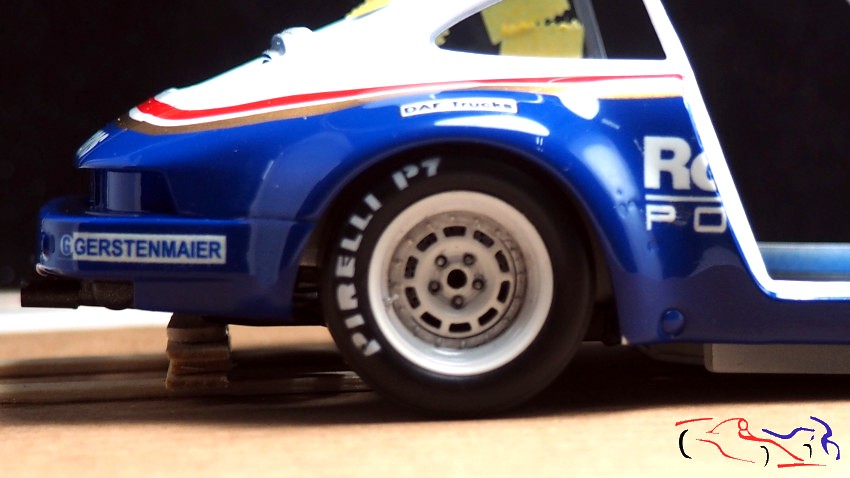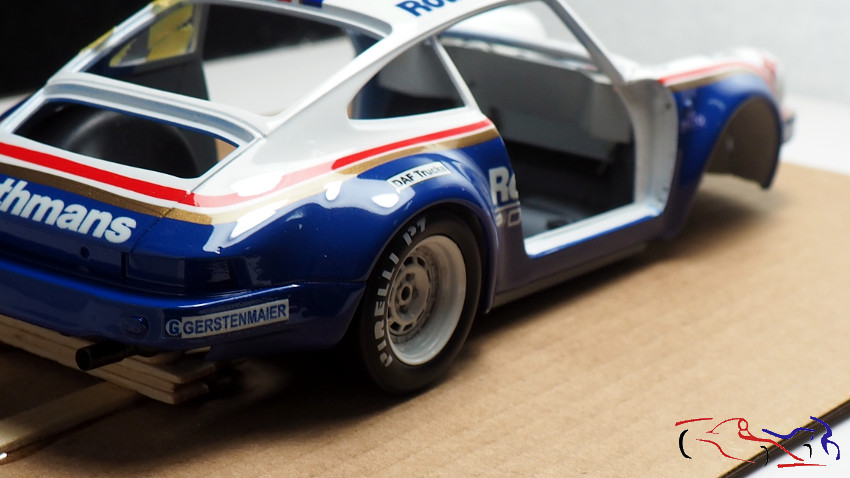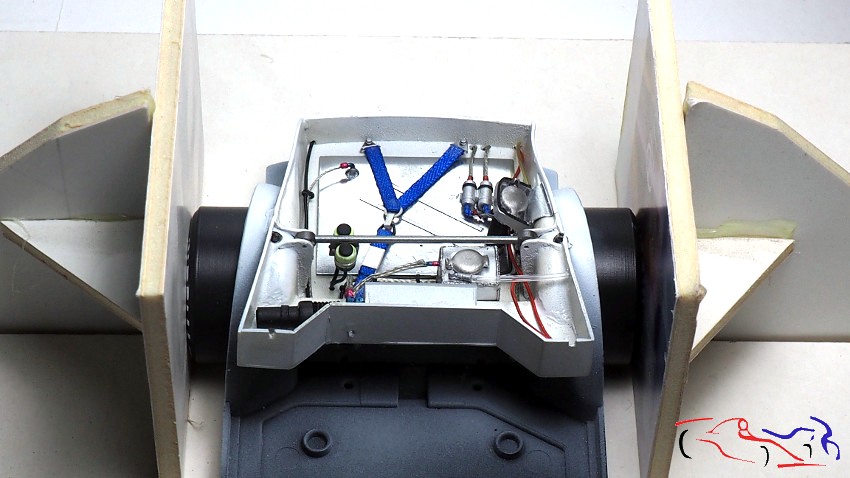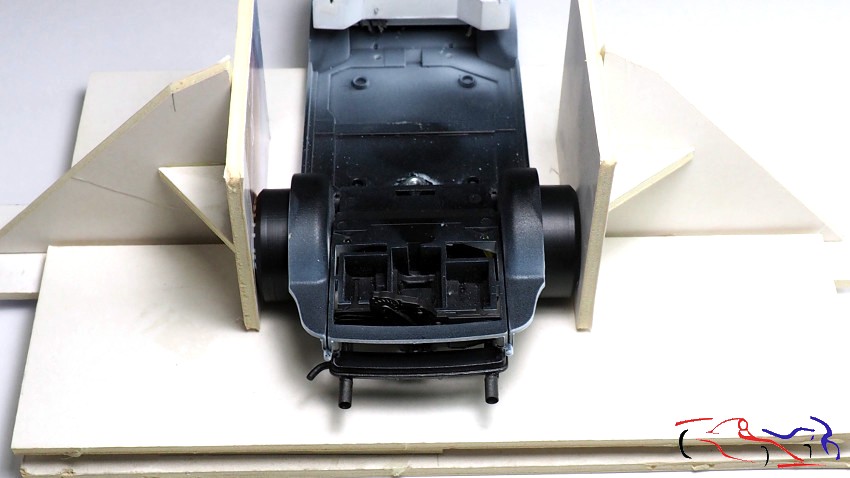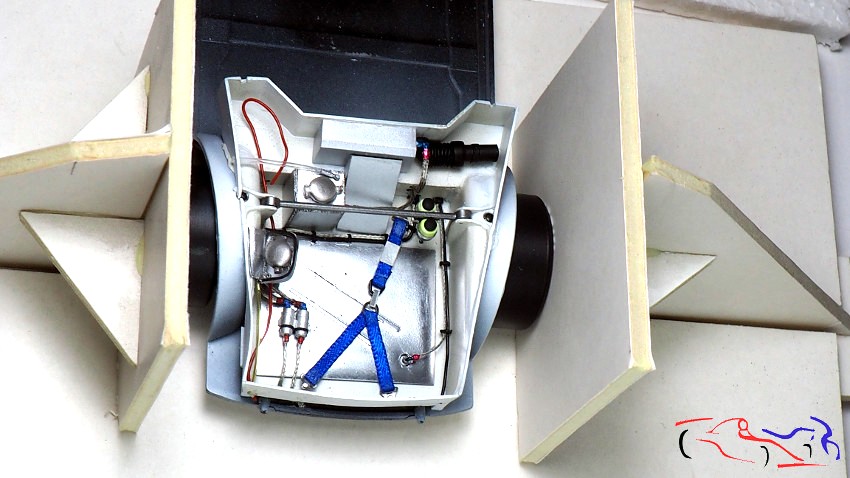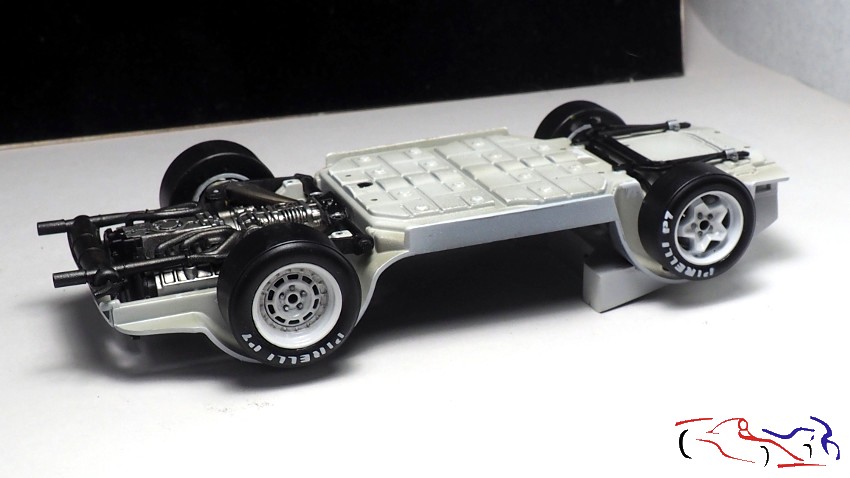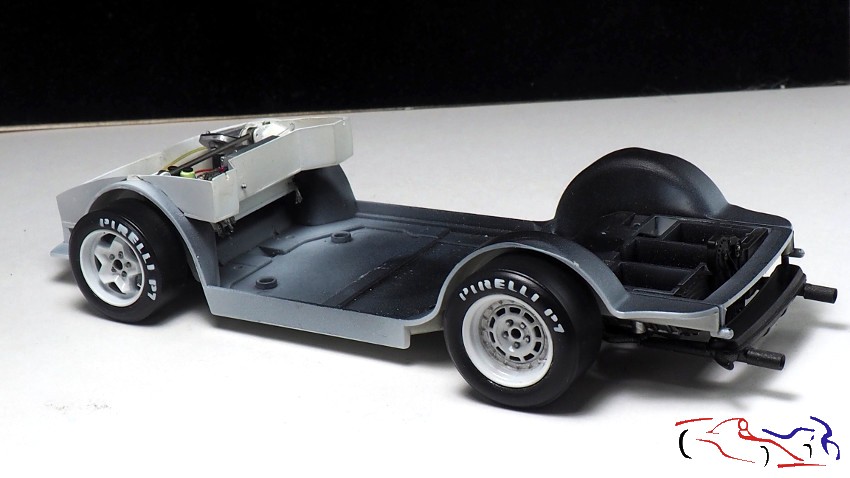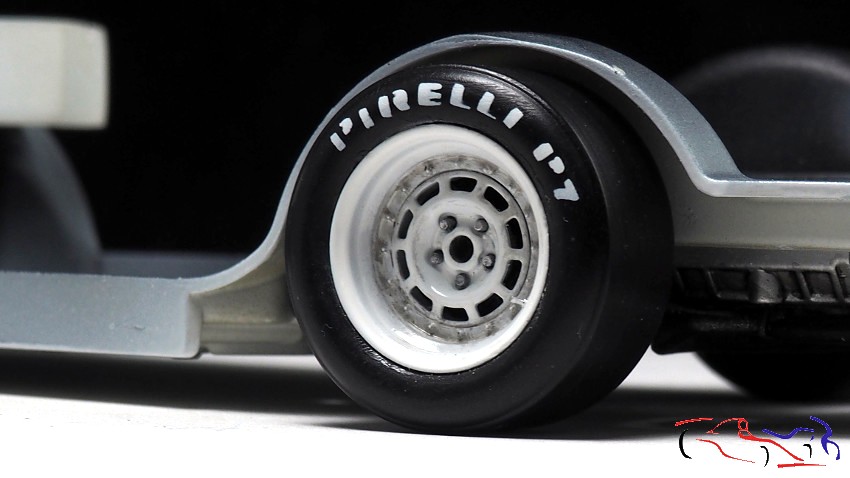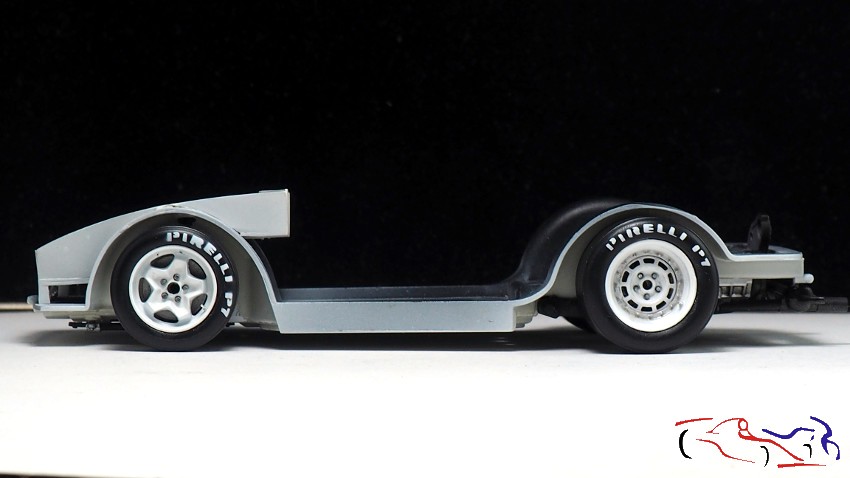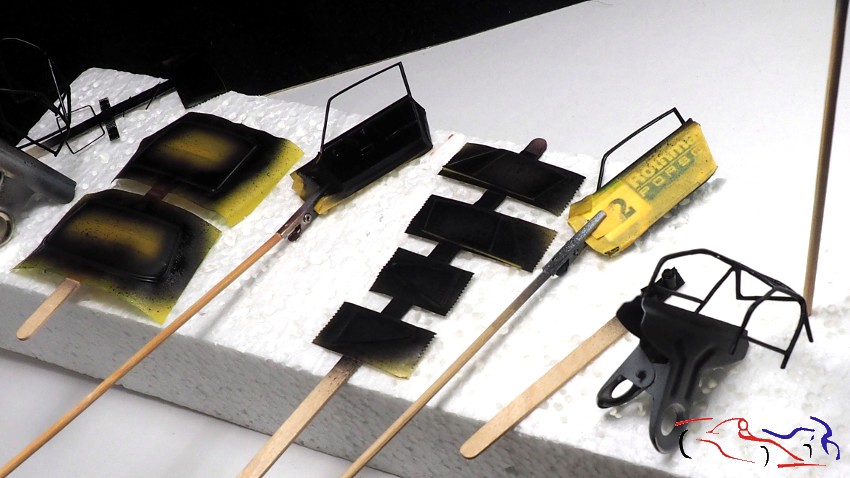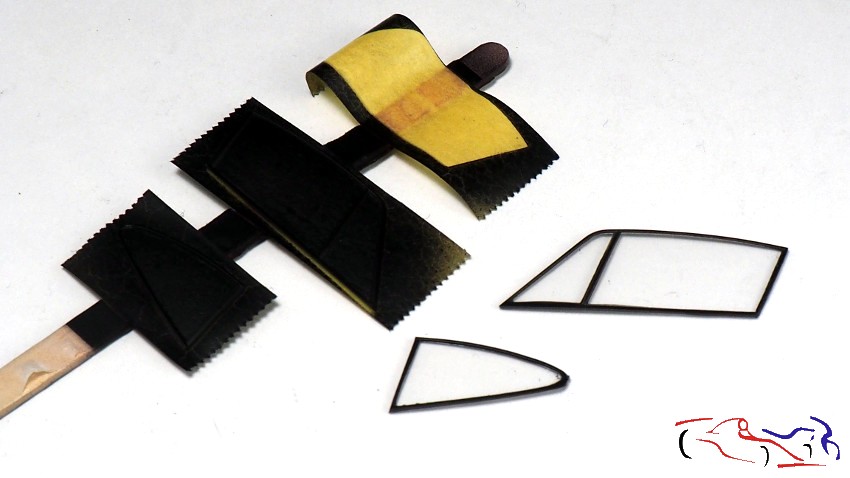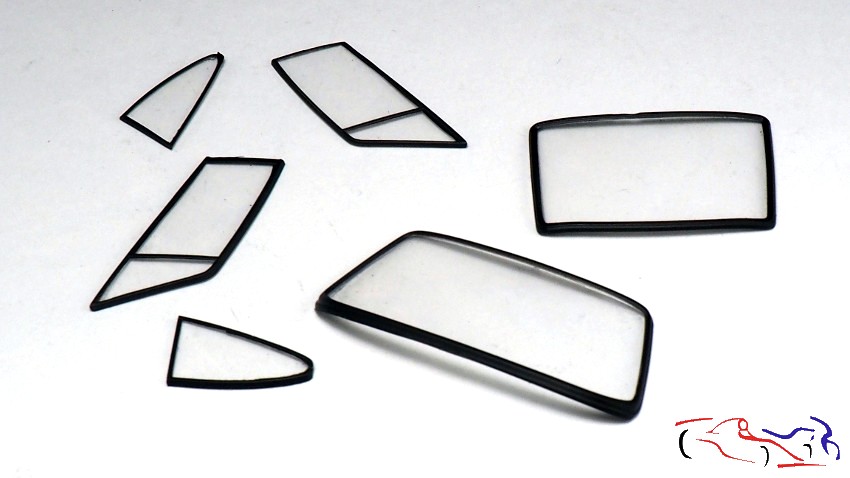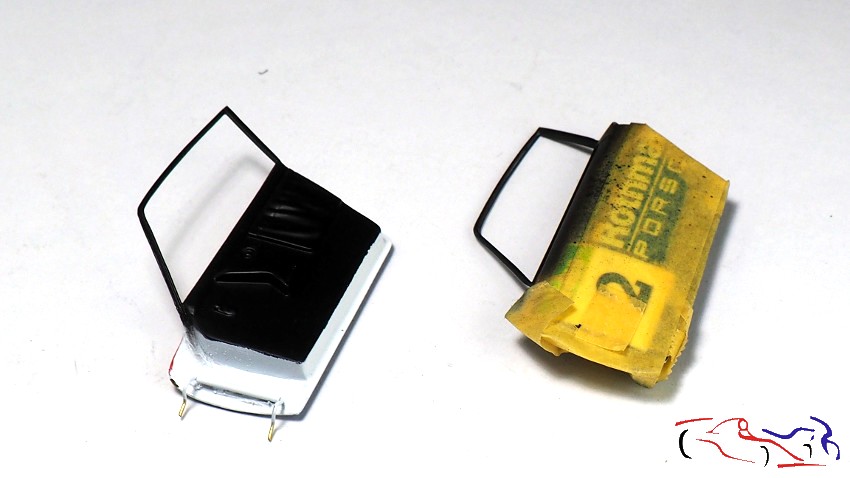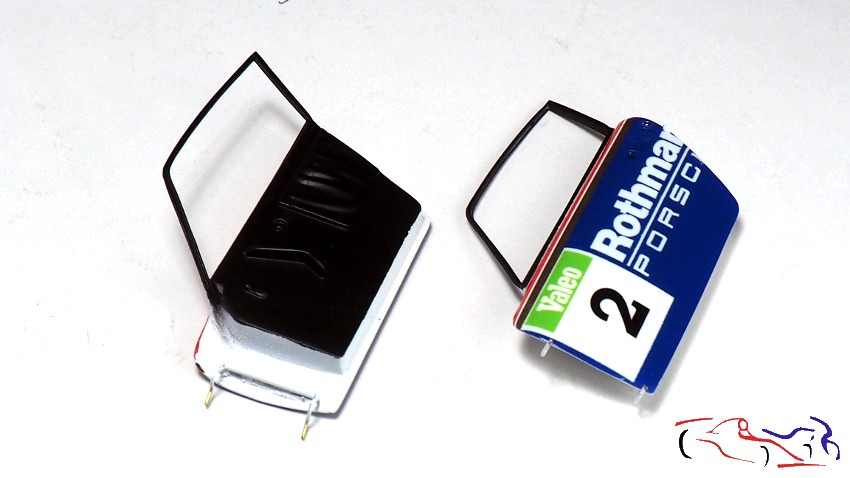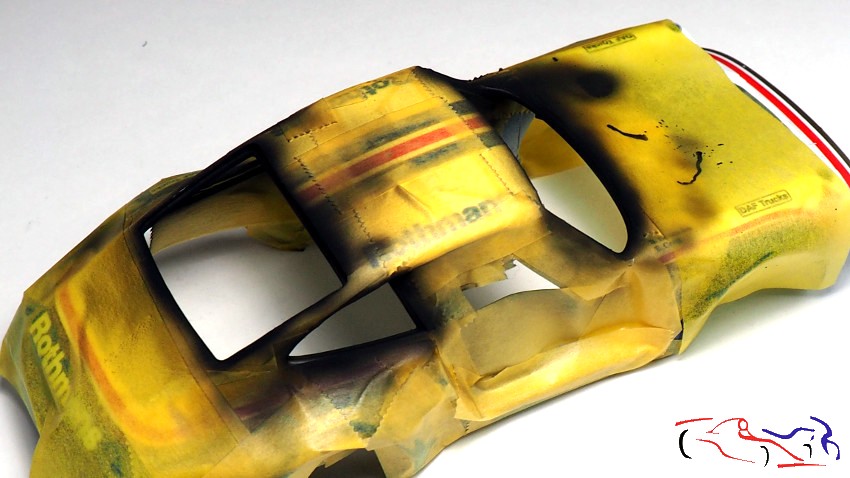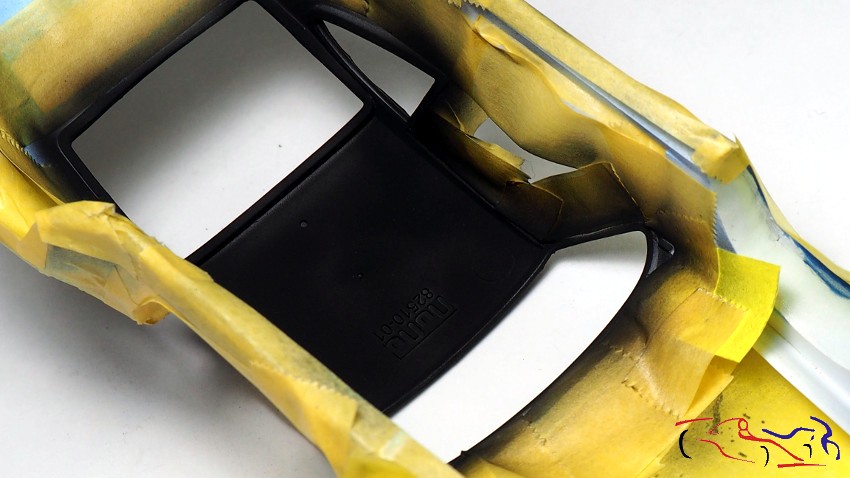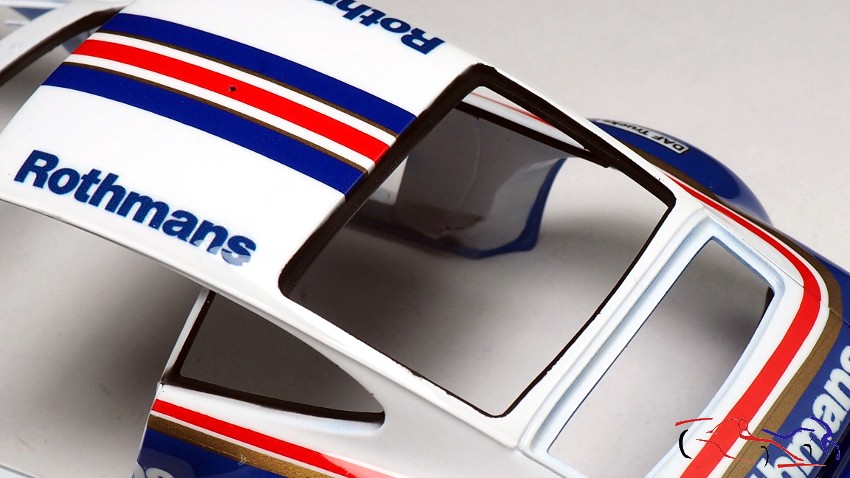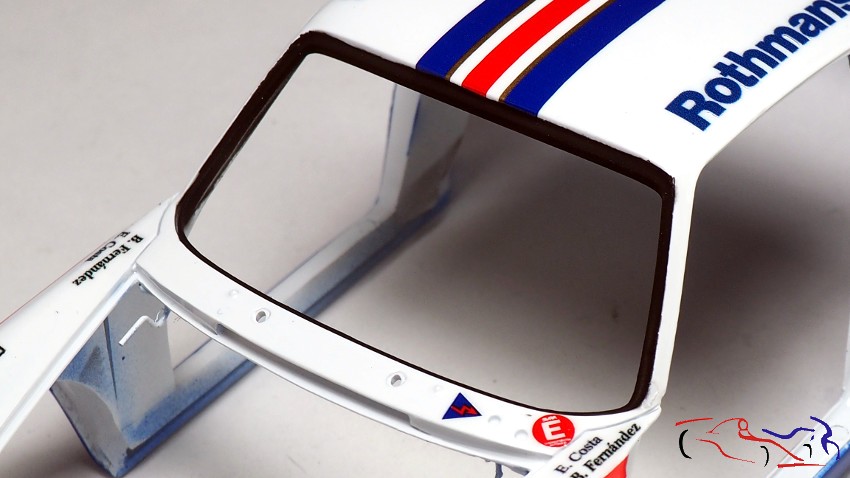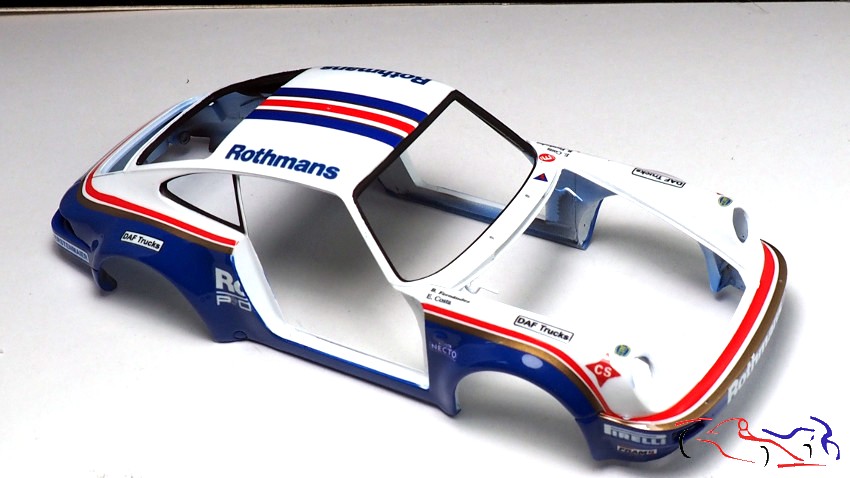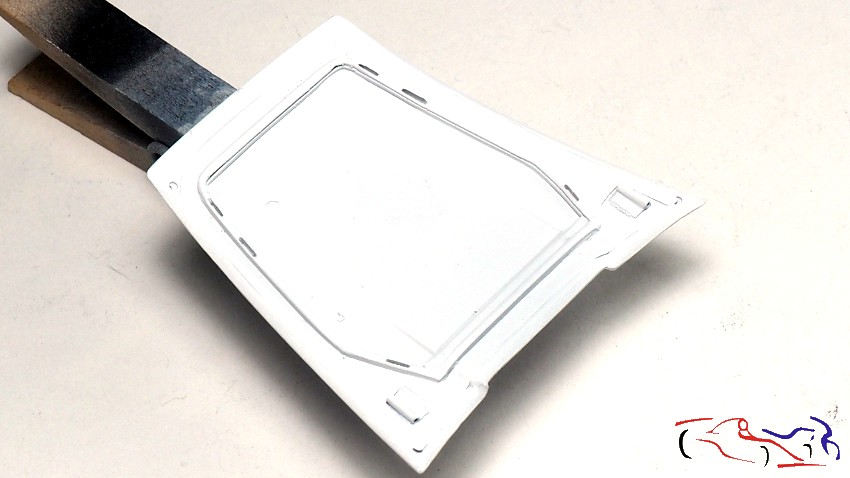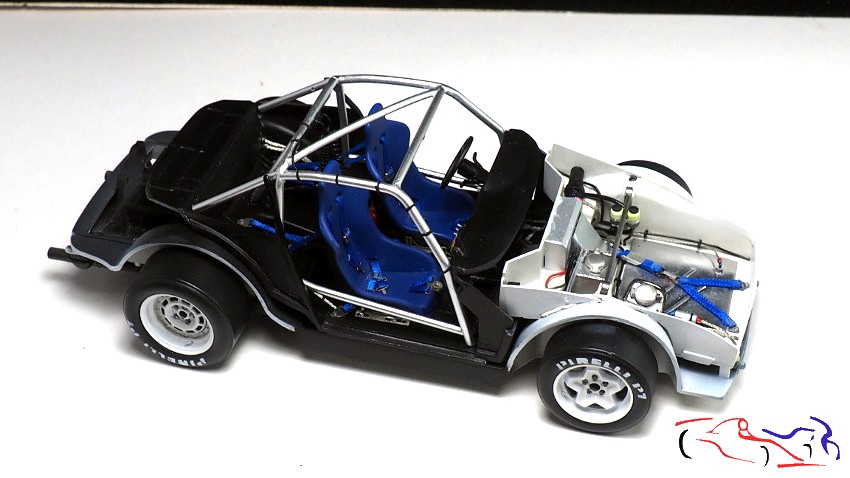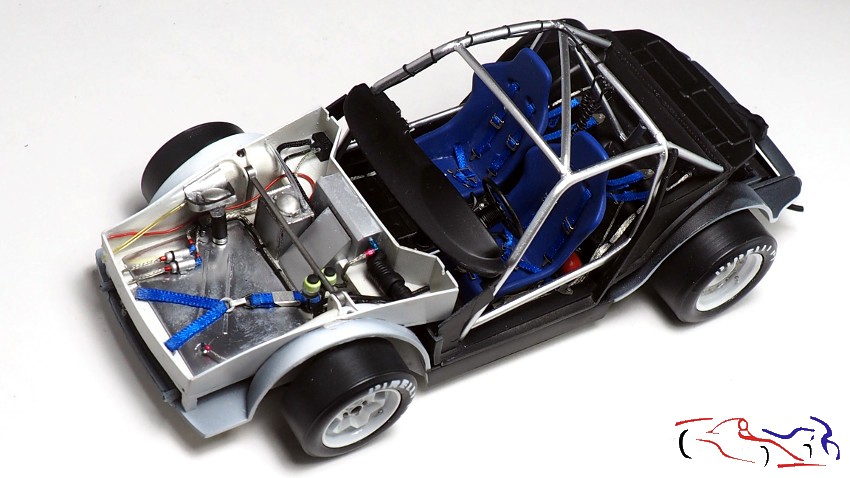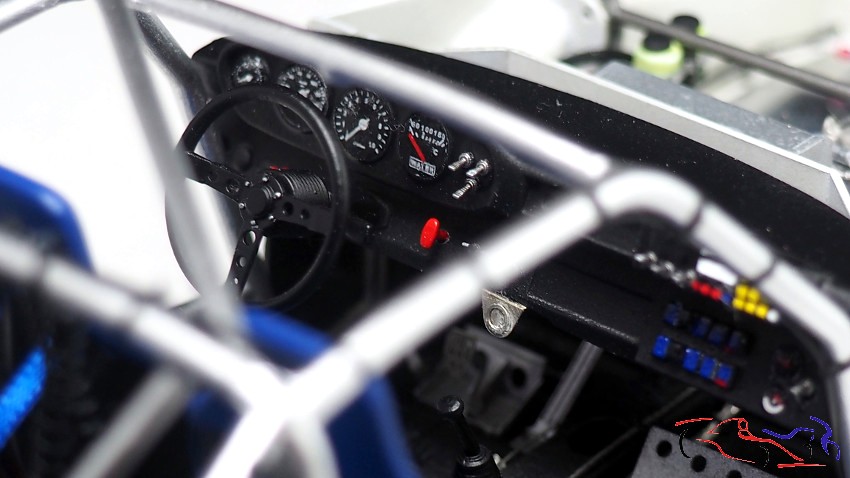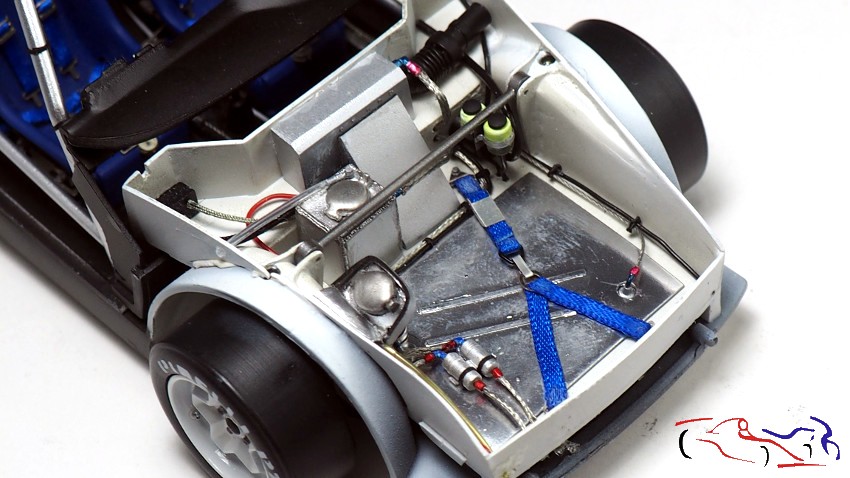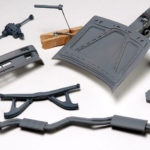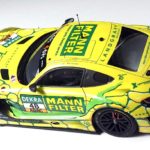Y llegamos al final del proyecto. Muchas cosas aprendidas, sobre todo, más experiencia a meterme en el modelismo donde nadie me llama, pero donde si quiero entrar!! Pero empecemos por mi valoración: empiezo por el kit, y después paso a comentar los cambios que queria hacer y los componentes extras incluidos. Y lo explicaré a lo largo del post.
El KIT – El kit de Nunu es simplemente un kit básico que al ser tan añorado, le cojes cariño. En general, las formas están bien y el plástico es bueno excepto el negro, que es de lo peor que he usado, y le pasa a todos los kits de esta marca: lijas y salen bolas, y lo tiene sque dejar muy fino para dejarlo bien. Los cristales están bien pero para dejarlo cerrado, sin abrir las puertas como he hecho yo, porque son muy gordos y forman parte de los pilares d ela carrocería. Las calcas están bien sin los logos de la tabaquera, aunque si se adquiere el TK de la propia Nunu, ya los consigues. Hay que decir, que las bandas roja y dorada que rodean todo el coche, son para la decoración que tuvieron los coches en Europa, ensanchándose en la parte trasera, siendo rectos en la versión española. Y para ello, tuve que afinarlas como explico en su correspondiente post. Pasamos a ver las fotos del coche con todo cerrado. Verías que las puertas no encajan del todo….
And we arrive at the end of the project. Many things learned, above all, more experience to get into modeling where no one calls me, but where I do want to get in!! But let’s start with my assessment: I start with the kit, and then I go on to comment on the changes I wanted to make and the extra components included. And I will explain it throughout the post.
The KIT – The Nunu kit is simply a basic kit that, being so missed, makes you love it. In general, the shapes are good and the plastic is good except the black one, which is the worst I have used, and it happens to all the kits of this brand: little balls come out in sanding, and you have to leave it very fine to leave it good. The windows are fine but leave them closed, without opening the doors as I have done, because they are very thick and are part of the body pillars. The decals are fine without the tobacco company logos, although if you purchase the TK from Nunu herself, you will already get them. It must be said that the red and gold bands that surround the entire car are for the decoration that the cars had in Europe, widening at the rear, being straight in the Spanish version. And to do this, I had to tune them as I explain in the corresponding post. We went on to see the photos of the car with everything closed. You would see that the doors don’t fit at all….


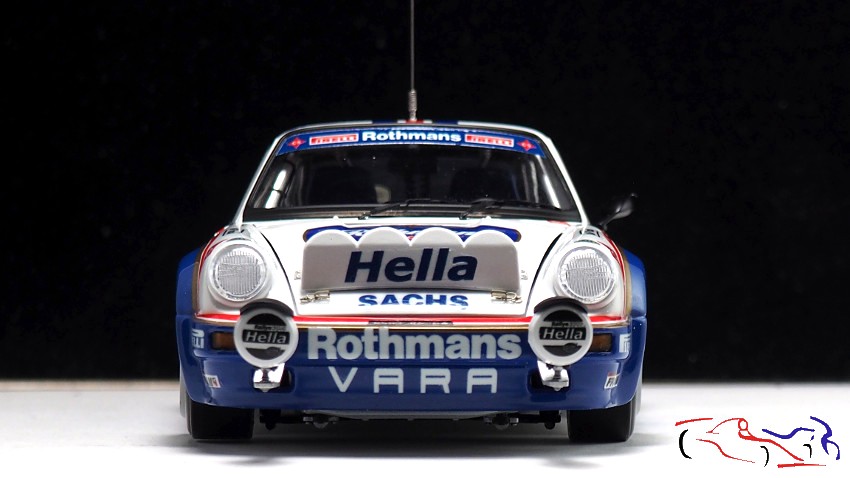

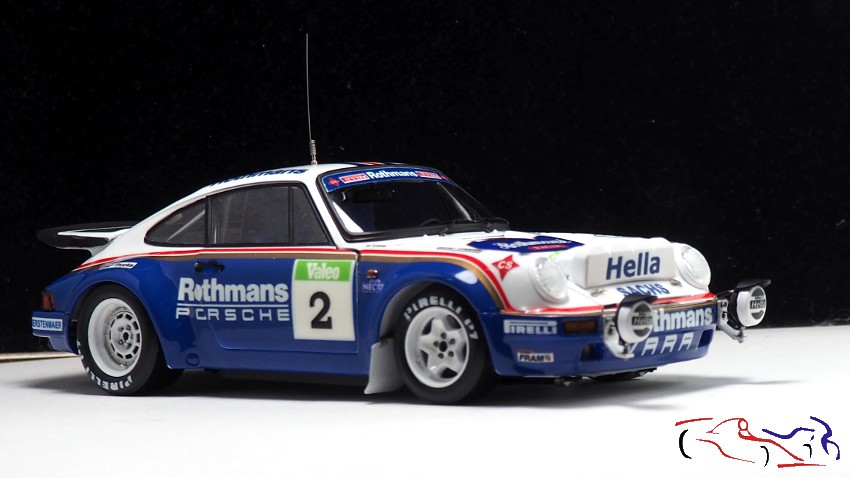
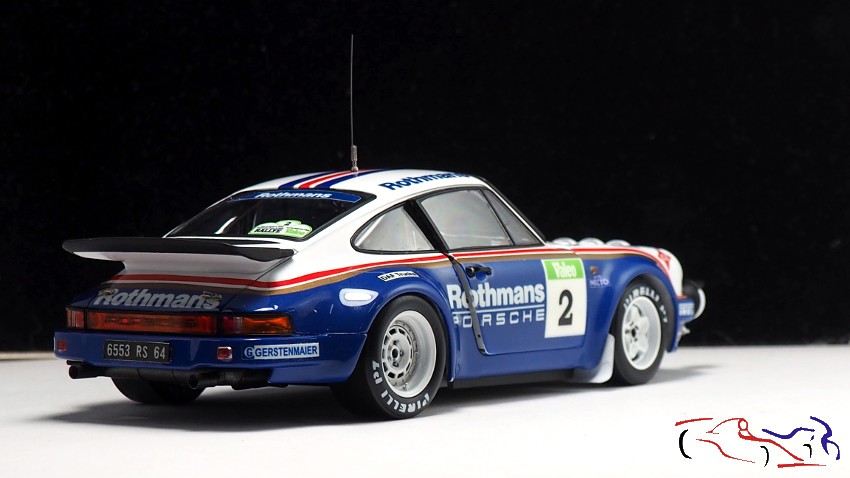

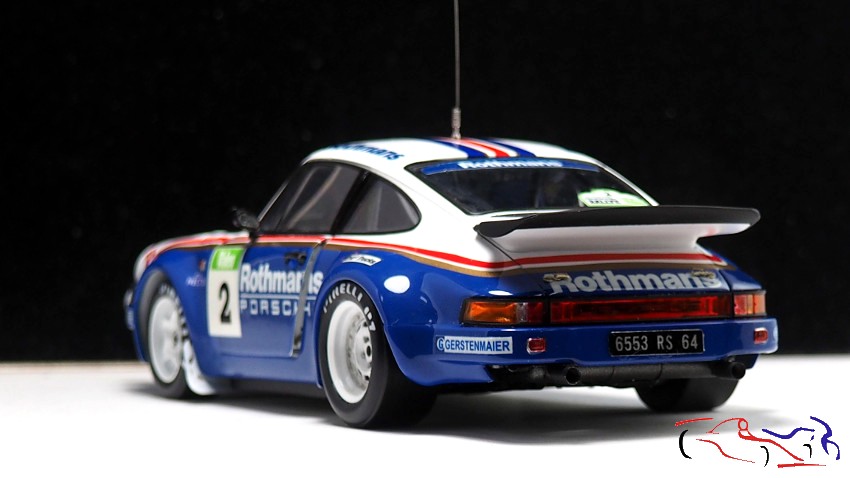
CAMBIOS REALIZADOS: Mi primera idea era abrir el capó, pero iba a quedar muy simple, con lo que abriéndo las puertas ganaría en espectacularidad. Y eso hice. Para ambos trabajos, debía recrear todo el capó, asi com la parte de abajo del mismo capó. Y en las puertas, todo lo que deja ver una puerta abierta además del guarnecido interior de las mismas. Ni qué decir tiene que quería que esas partes fueran funcionales con bisagras!!! Y así lo hice!!. Aquí os paso las fotos con capó y puertas abiertas:
CHANGES MADE: My first idea was to open the hood, but it was going to be very simple, so opening the doors would gain more spectacularity. And that’s what I did. For both jobs, I had to recreate the entire hood, as well as the underside of the hood itself. And in the doors, everything that an open door reveals in addition to their interior trim. Needless to say, I wanted those parts to be functional with hinges!!! So I did it!!. Here are the photos with the hood and doors open:
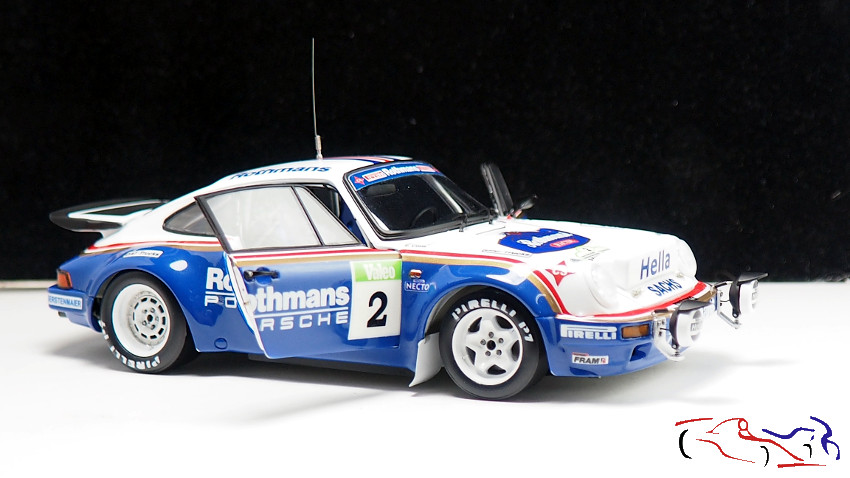
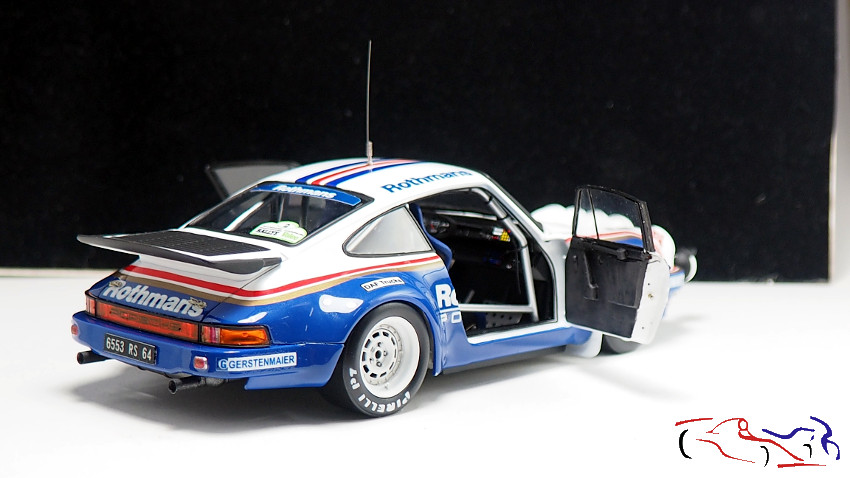
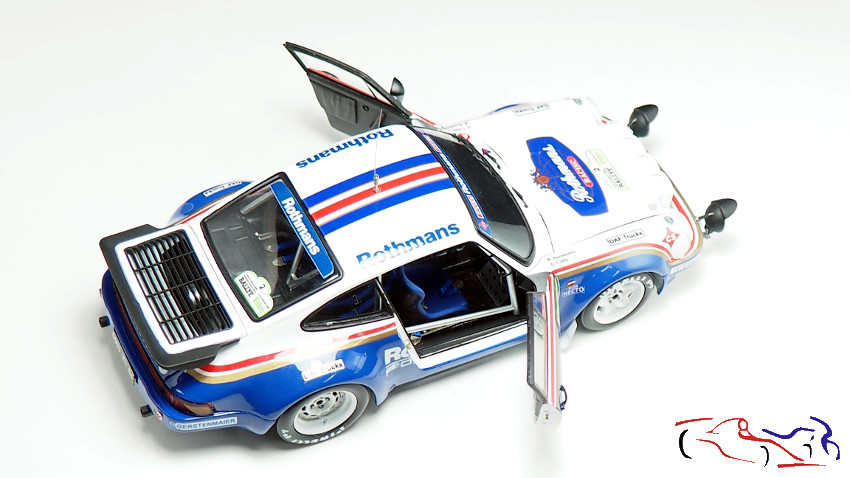
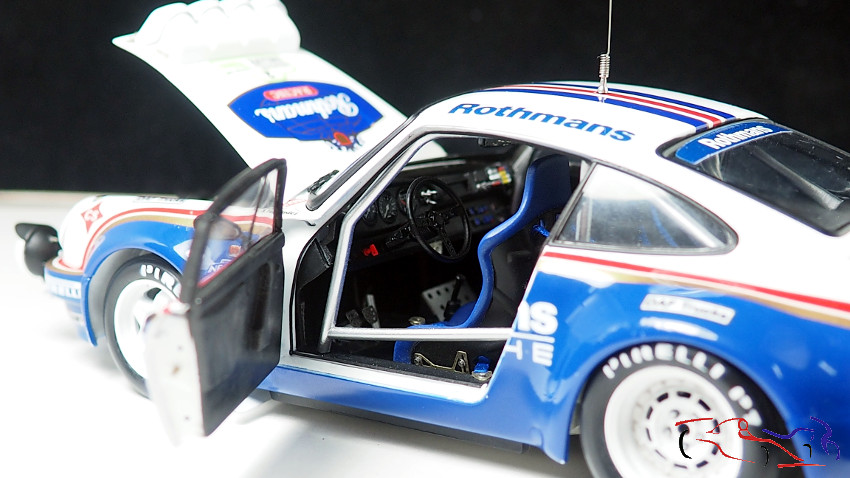
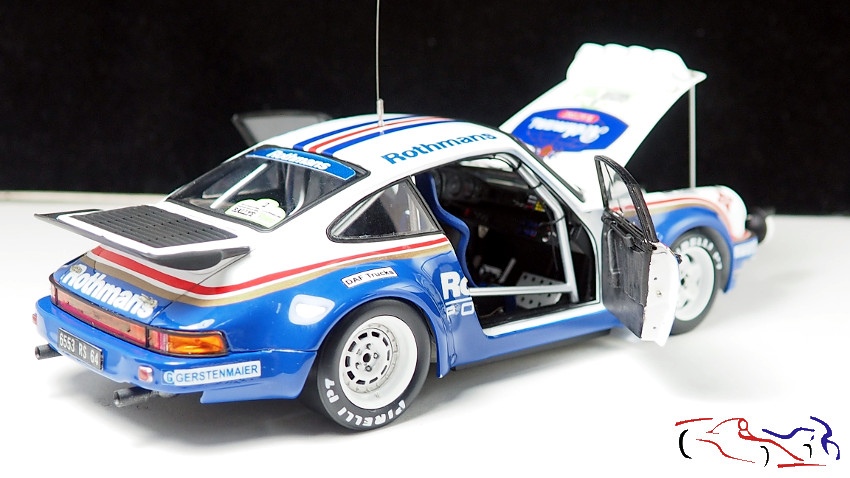

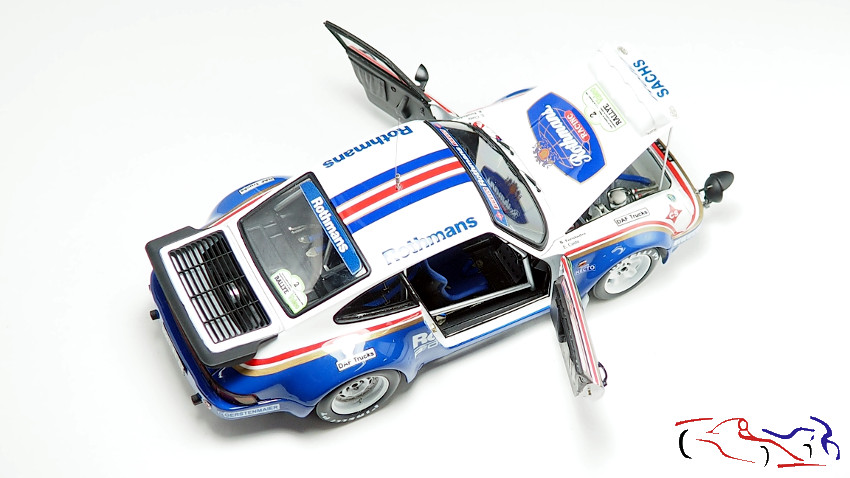
ACCESORIOS AÑADIDOS. Varios componentes fueron añadidos para crear una copia del coche real que corrió en el Rally Valeo de 1984:
- Scalelab24. Me proporcionó un TK con fotograbados (Gracias!!) muy bien realizados que se pueden incluir fácilmente.
- DAB Models. El volante es simplemente magnífico!! (Gracias Pablo!!)
- JAM Scale Design. Su TK de los faros del capó y auxiliares, rehalzan mucho la estética del coche. (Gracias Ignacio Bas!!)
- KMP. Las llantas y los neumáticos son increibles y muy reales. Lástima que tuve que acortar la pieza del kit para ajustar las ruedas traseras porque sobresalían mucho. (Gracias Andrea!!)
- Printlab de Spotmodel. Gracias a Mario Vallina que diseñó las calcas del coche español e incluyó las del rally Valeo. También me proporcionó las máscaras Pirelli de las ruedas.
- Number5. El color de la pintura es todo un acierto de esta marca!!
Las siguientes fotos os muestran detalles del coche:
ADDED ACCESSORIES. Several components were added to create a copy of the real car that ran in the 1984 Valeo Rally:
- Scalelab24. He provided me with a TK with very well made photo-etched parts (Thank you!!) that can be easily included.
- DAB Models. The steering wheel is simply magnificent!! (Thank you pablo!!)
- KMP. The wheels and tires are incredible and very real. Too bad I had to shorten the kit piece to fit the rear wheels because they stuck out a lot. (Thank you Andrea!!)
- JAM Scale Design. Its TK of the hood and auxiliary headlights greatly enhance the aesthetics of the car. (Thank you Ignacio Bas!!)
- Spotmodel Printlab. Thanks to Mario Vallina who designed the decals for the Spanish car and included those from the Valeo rally. He also provided me with the Pirelli masks for the wheels.
- Number5. The paint color is a great success for this brand!!
The following photos show you details of the car:

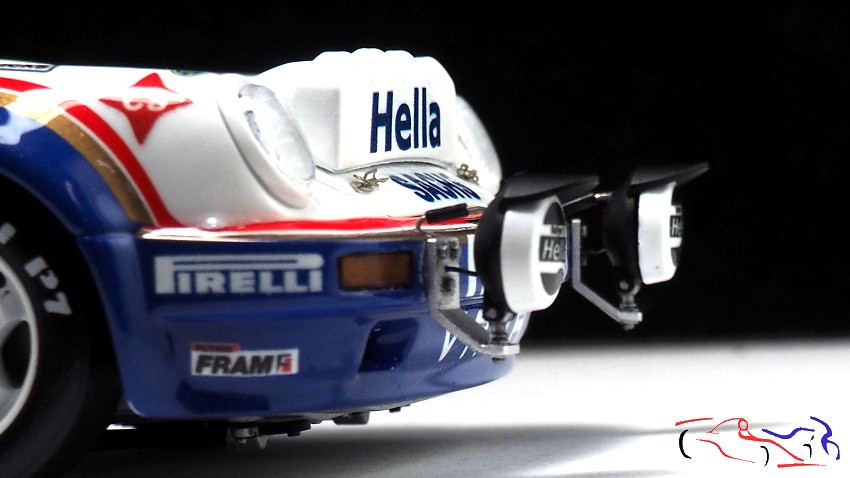
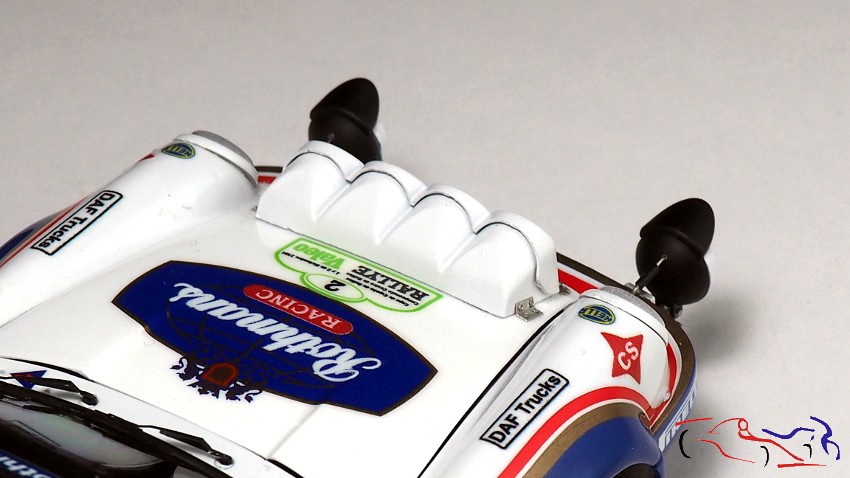
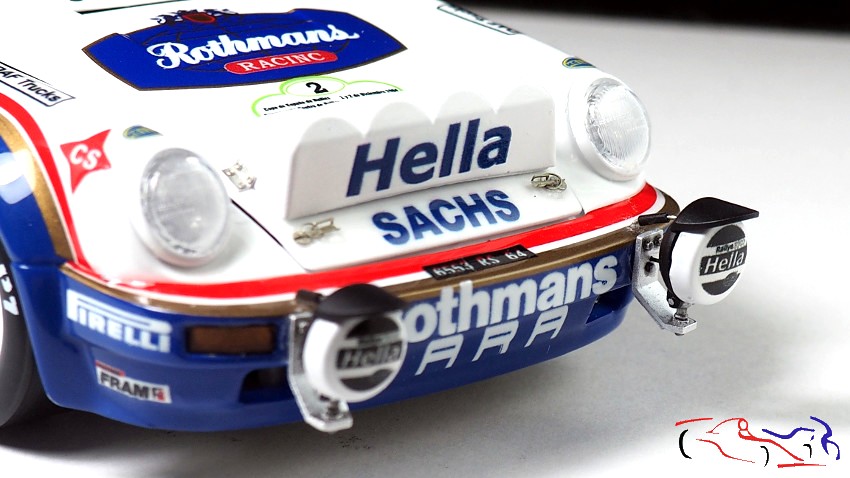
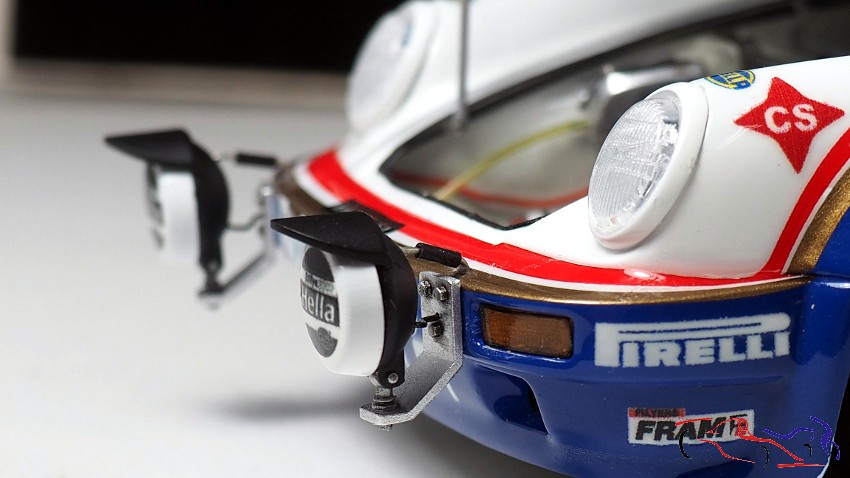
Ahora, unas fotos del capó abierto:
Now, some photos of the open hood:
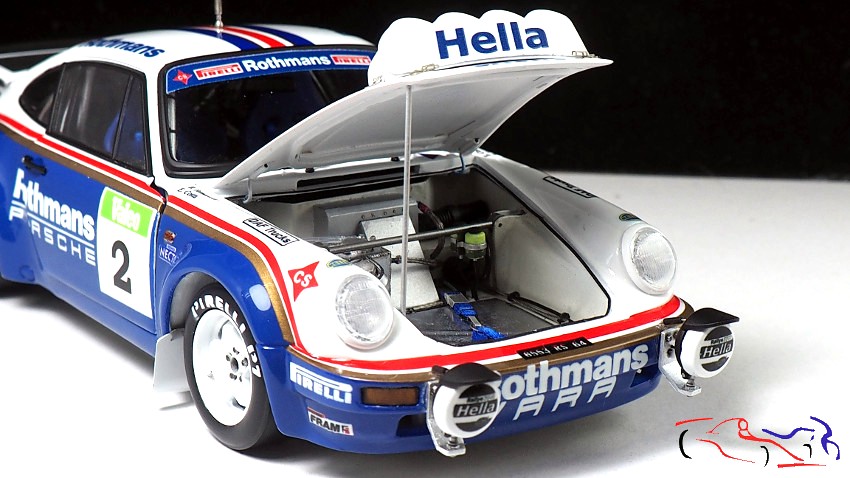
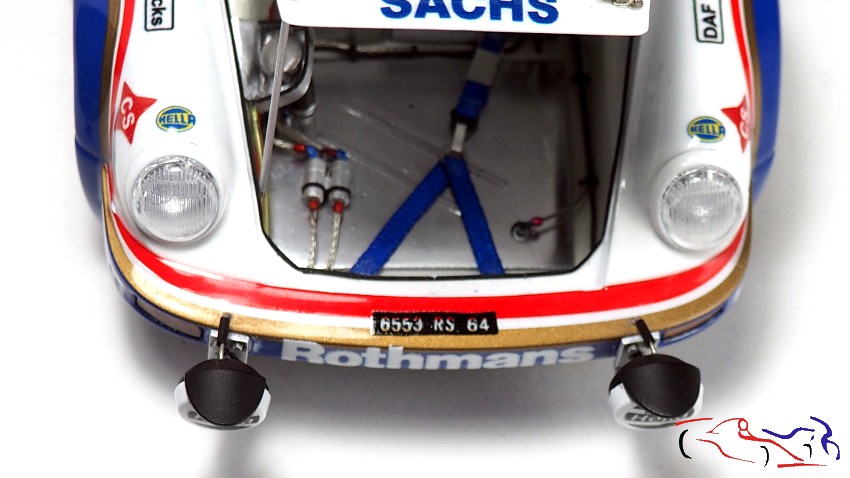

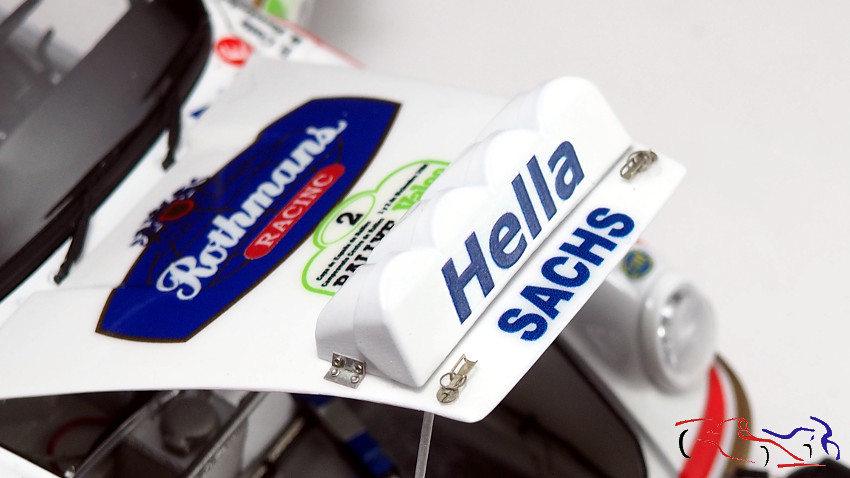
Más fotos de la carrocería:
More photos of the bodywork:

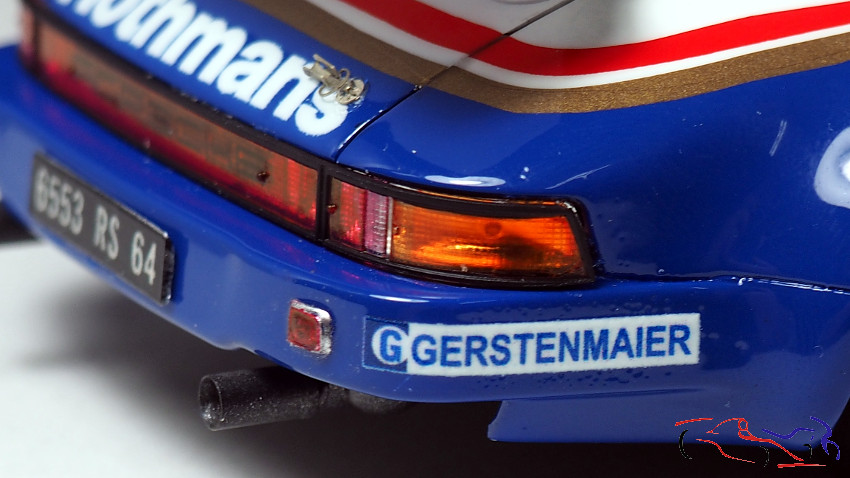


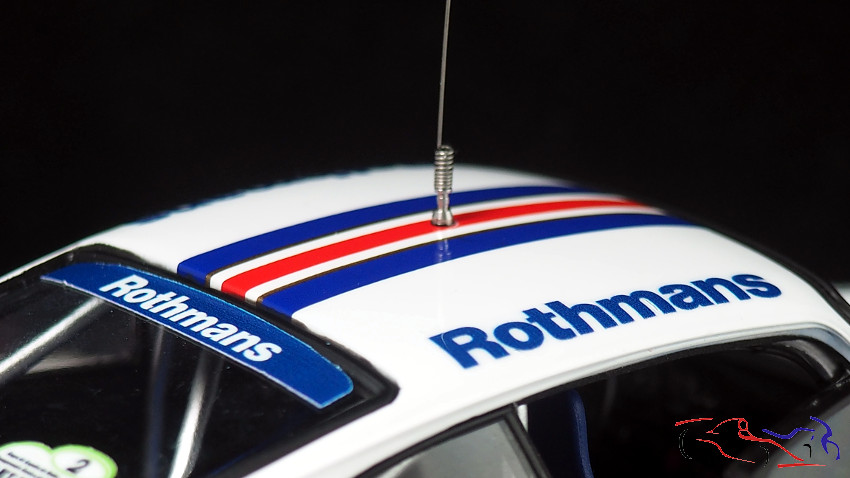
Por último, fotos con el coche puesto en su base:
Finally, photos with the car placed on its base:
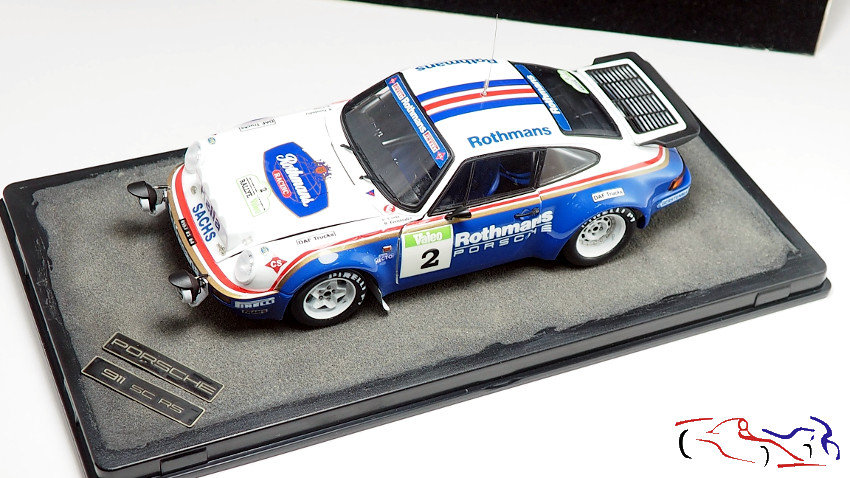
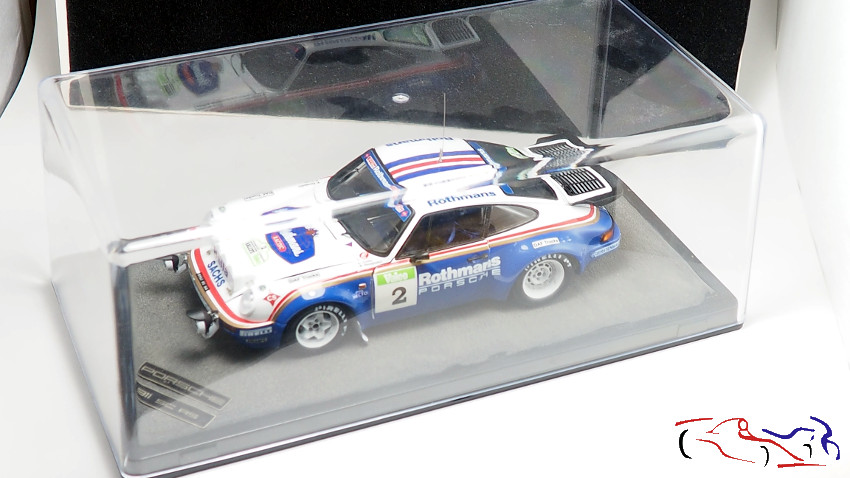
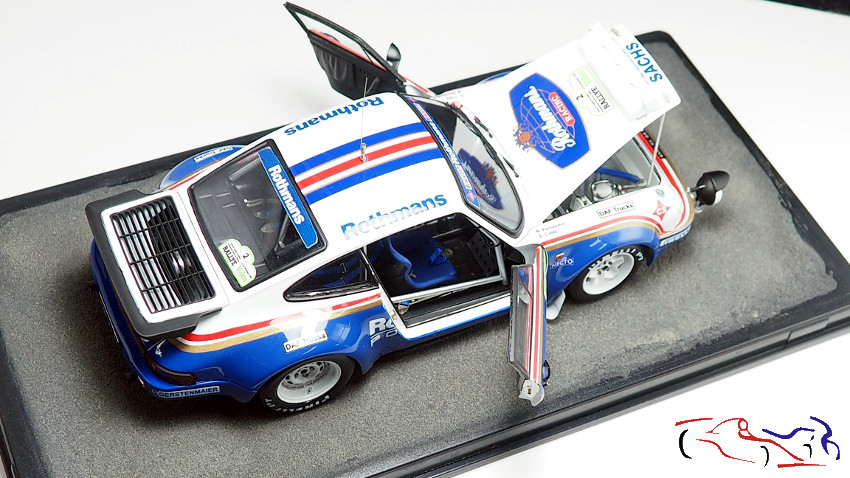
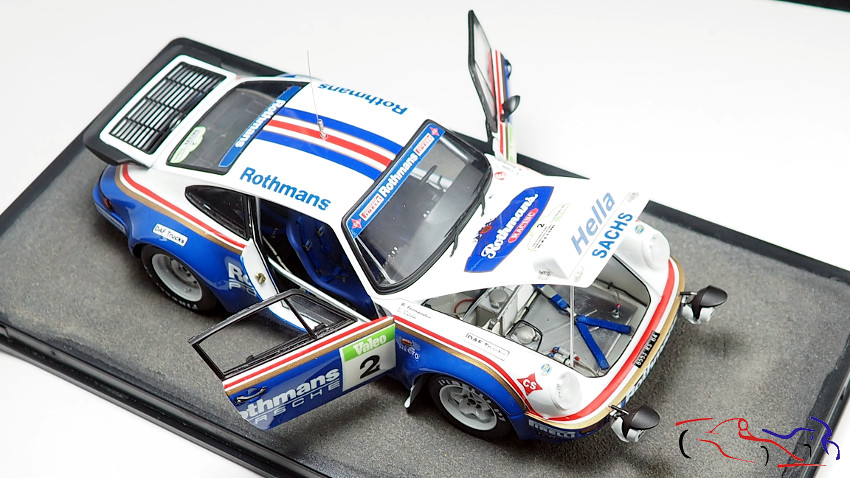
Espero que os haya gustado tanto como a mi!! Gracias por ver y comentar!!
I hope you liked it as much as I did!! Thanks for viewing and commenting!!

